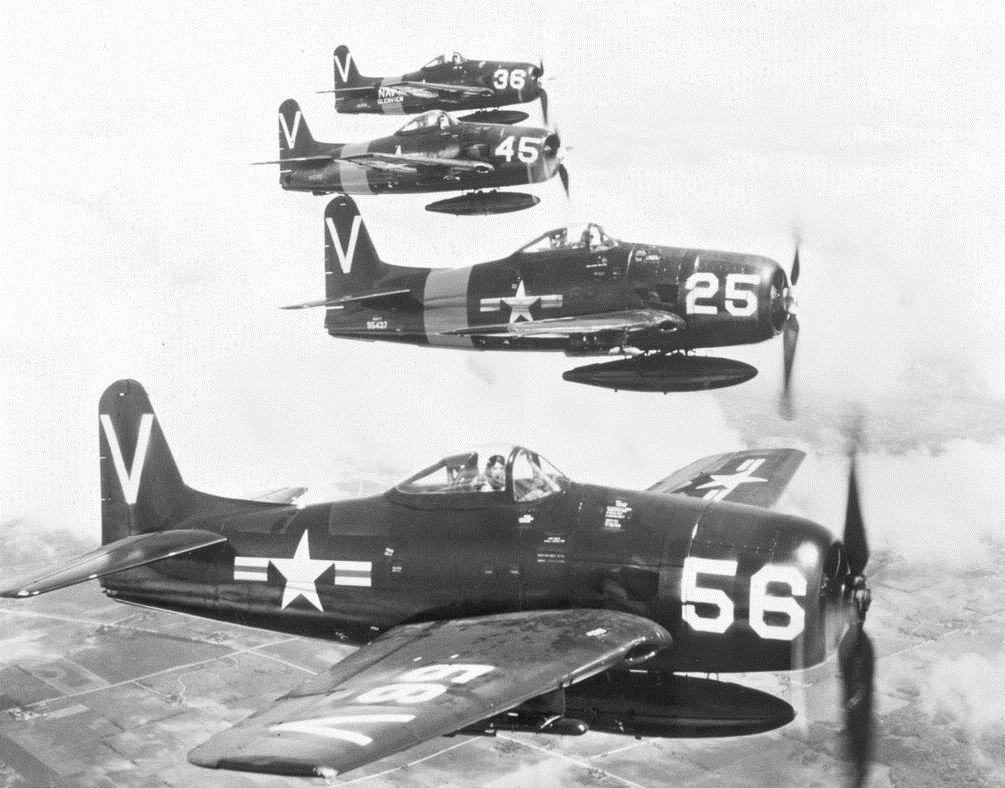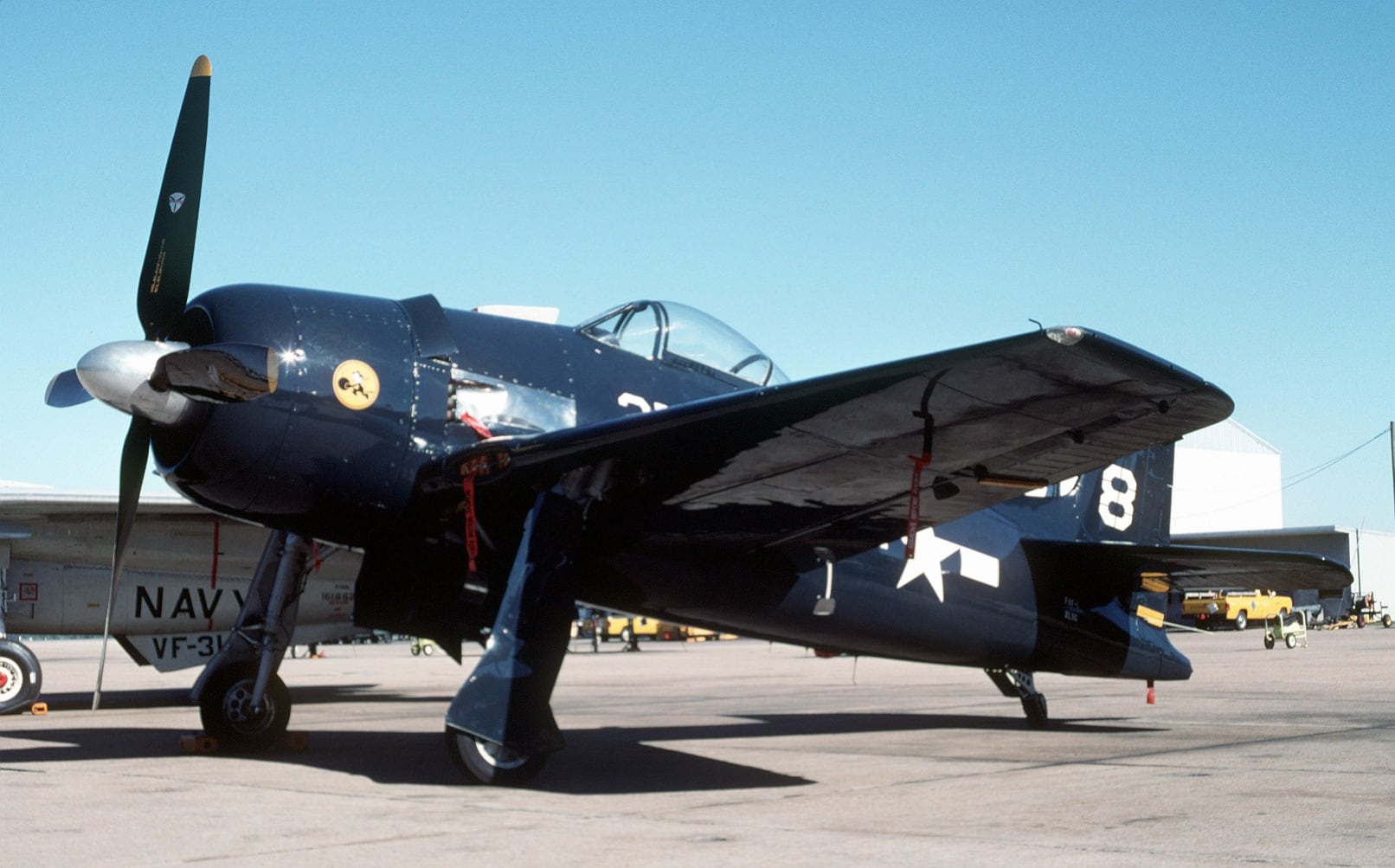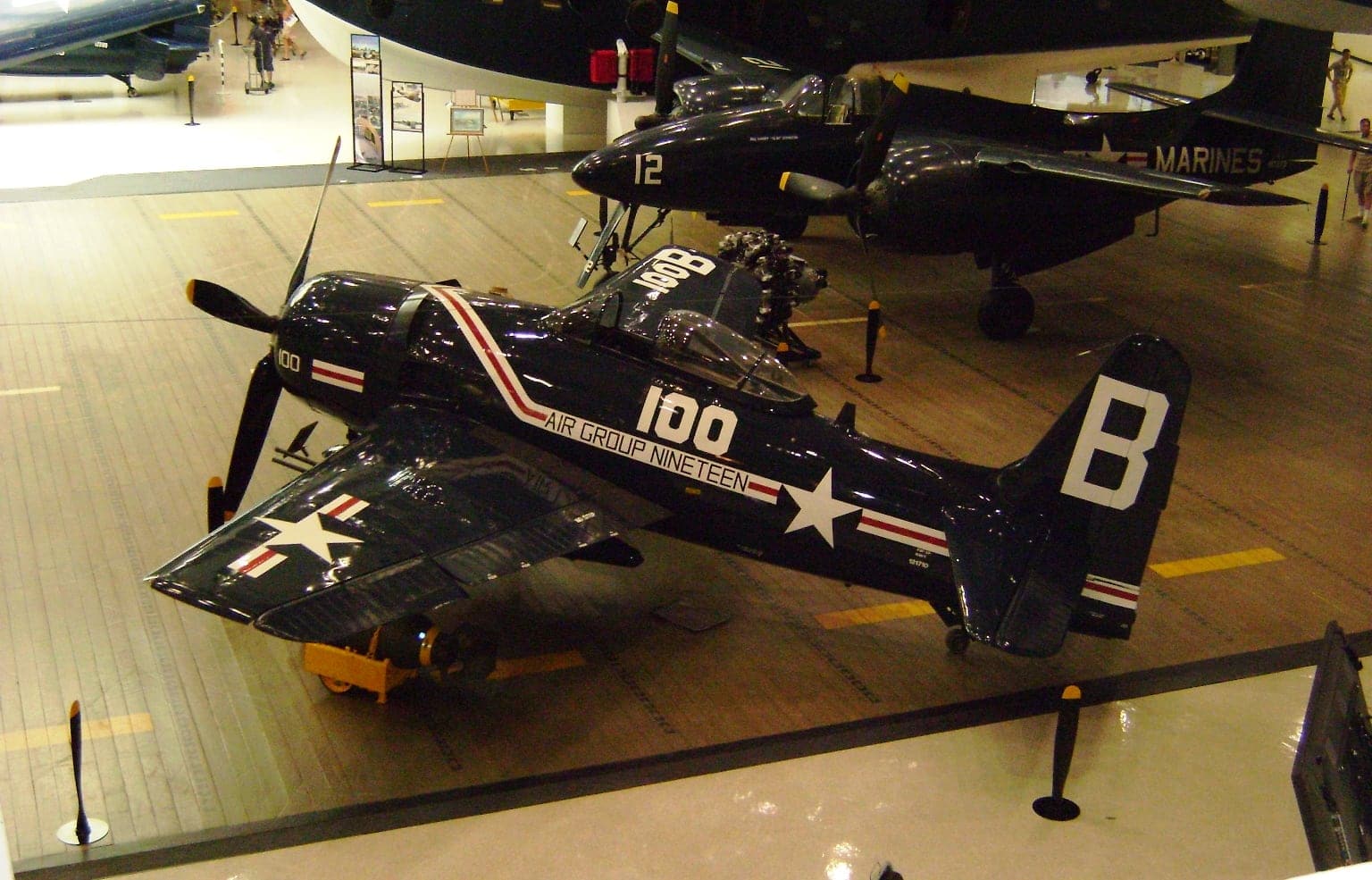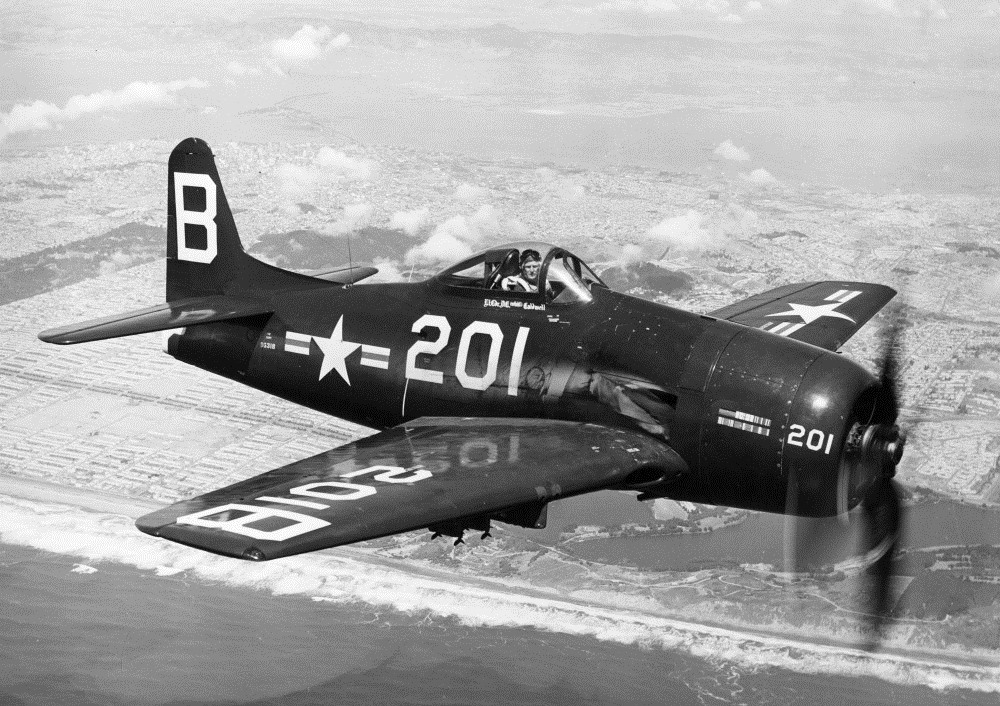Initial Orders and What Might Have Been
Despite the issues, the Navy ordered 2,023 Grumman F8F-1s on 6 October 1944, and another 1,876 F3M-1 Bearcats to be built by Eastern (General Motors) on 5 February 1945. The F3M-1s would have had a slightly increased fuel capacity and a more powerful R-2800-34W engine. Canadian Car and Foundry would have built the F4W-1 version.

Kittens First to Fly the New Cat
The first operational squadron to receive the F8F-1 Bearcat was Fighter Squadron Nineteen (VF-19) Satan’s Kittens. A few more squadrons received Bearcats before World War II came to a close but none went to war. Grumman’s Bearcat order was reduced to 770 F8F-1s. The F3M-1s and F4W-1s were all canceled. 126 F8F-1Bs with 20 millimeter cannon in place of the .50 caliber machine guns were built.

Night-Fighting Bearcats
Fifteen F8F-1Bs were fitted with the APS-19 radar mounted under the starboard wing, making them into F8F-1N night fighters. Beginning in 1948, Grumman began building the F8F-2. These Bearcats featured a taller vertical stabilizer, a more powerful R-2800-34W engine, and a modified cowling design. 293 F8F-2s were built, with the derivatives being the F8F-2N night fighter and the F8F-2P photographic reconnaissance version.

Bringing a Prop to a Jet War
Eventually, 24 Navy and a few Marine Corps squadrons would fly Bearcats. But production of the F8F-2 at Grumman ended in 1949 when the last of 1,265 Bearcats rolled out the door. The jet age was here, or there, to stay. Navy fighter squadrons started converting to jets. The last Bearcats, operational F8F-1, F8F-1N, F8F-2, F8F-2N, and F8F-2P models, were retired by the end of 1952, with many of them being retired by Naval Reserve units.

Climbing Like a Homesick Angel
The Bearcat, too late to see action in World War II and replaced by jets by the Korean War, was one of the sweetest flying aircraft developed during the war. In 1946, a standard production Grumman F8F-1 Bearcat took just 94 seconds to climb to 10,000 feet after a takeoff run of only 115 feet —an absolutely unheard-of event in the days of propeller-driven aircraft. Even the Blue Angels, who started flying the Bearcat in 1946, transitioned to jets and left the last propeller-driven Grumman Cat for the new jet-powered Cats after going off to fight in Korea in 1950.

Bearcats did see combat with the French during the French Indochina War and were also operated by Thailand and South Vietnam. Quite a few Bearcats were purchased as surplus from the Navy during the late 1950s. The record-setting, highly modified Bearcats of air racing opponents Lyle Shelton (in Rare Bear) and Daryl Greenamyer (in Conquest I) entertained air racing crowds for decades. Before that, Myra Slovak’s stock Bearcat won the first Reno Air Race in 1964. Today, there are about 11 airworthy Bearcats with a few more under restoration. The sight and sound of a Bearcat in flight is an experience not to be missed.

Enjoy this short look and listen to a warbird F8F Bearcat uploaded to YouTube by Magcheck.
[youtube id=”P-v8EfqXLwk” width=”800″ height=”454″ position=”left”]

I grew up in Bethpage, LI, NY. My uncle Herb was Chief Pilot for Grumman Aircraft. William T Schwendler was my neighbor. He used to talk about the Bearcat quite often. He called it his ”Bärenkatze“…
Many years back I watched aerobatics from one of these F-8 Bearcats at Spaceland Air Park. “Impressive”. Everybody talks about those smoth fine running F-51’s, but I guess it’s my flightline experience, I like those ole big radial jug engines working hard.